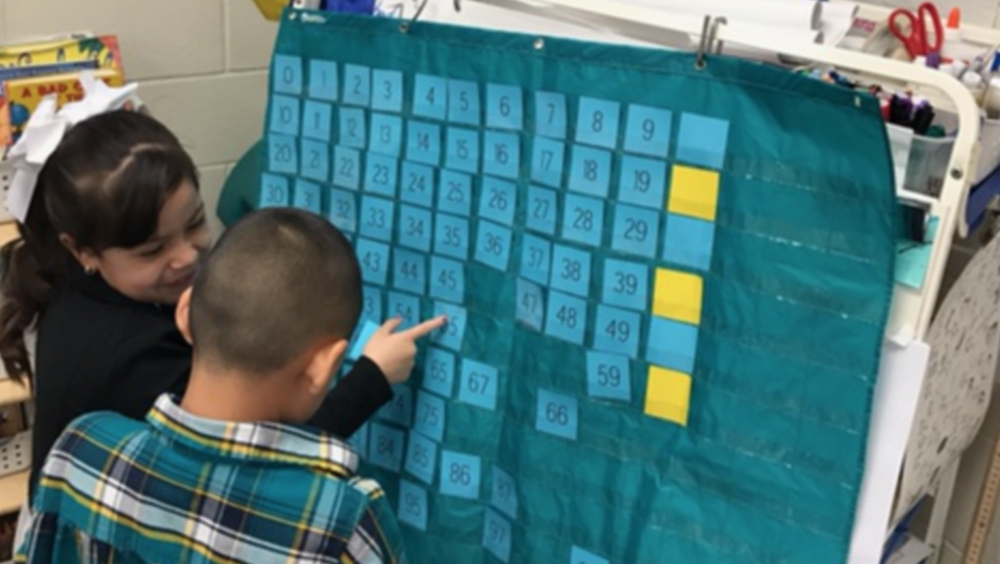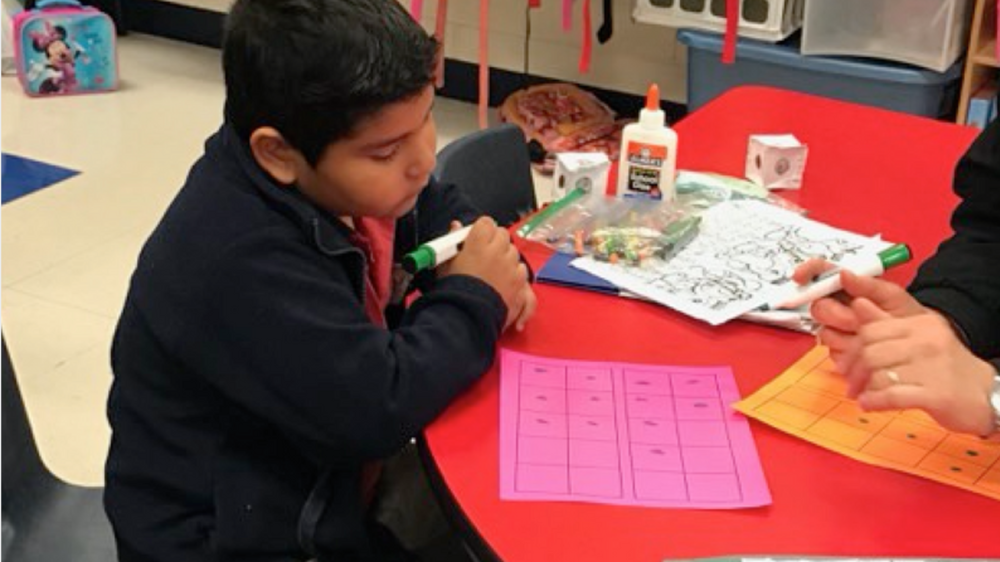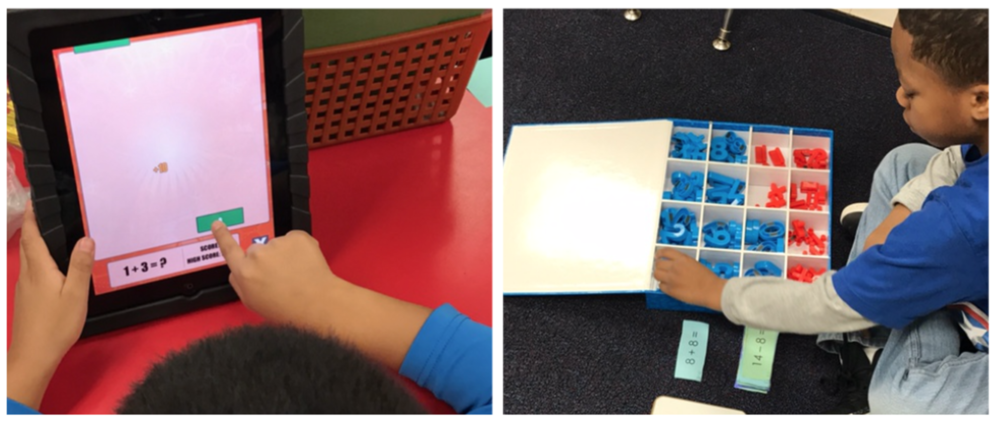
Section Branding
Header Content
A Vision for Elementary Math
Primary Content

What if we could find out exactly where students are in the area of numeracy? What would happen if we could diagnose, prescribe and provide customized math instruction for students in the area of numeracy? How would math look if we combined mental math strategies, growth mindset and a work session where students experienced opportunities designed specifically for their needs? At Blue Ridge School, that is exactly what we are doing.
Blue Ridge is one of six elementary schools in Dalton Public Schools. It is 100% free lunch and 60% English Language Learners. Students at Blue Ridge have 90 minutes of math daily. In class my co-teacher, Delores Smith, and I work together to consistently provide instruction based on the work of the Georgia Math Frameworks, 3 Act Tasks by Graham Fletcher, Number Talks by Sherry Parrish, infused with Growth Mindset by Jo Boaler, and New Zealand Math Numeracy Framework. These components provide a wealth of choices for lesson design. The work design is centered on our district math beliefs which are:
• Everyone can successfully understand math at higher levels.
• Numeracy rich communities are necessary.
• Math is about connections, communicating and exploring.
• Depth is more important than speed in math.
• Math is about understanding, not performing.
• In Math, learning from mistakes is valuable and takes perseverance.
• Questions about why and how are really important in math.
• Math is about engaging in creativity and making sense.

Instruction is woven together through the lesson which begins with a balance of explicit instruction, goal setting as a class and expectations for the work session. Number Talks occur where students justify and defend their mathematical thinking when solving mental math problems. During the work session, students begin where a baseline numeracy assessment is used to give them customized opportunities to experience numeracy practice through games.
Students also work with teachers to do online grade level frameworks in a guided math setting. While in work session, students not only work with teachers, but they also have time to work with their peers to collaborate, communicate and engage in performance tasks. A few times a month, students participate in a 3 Act Task that pushes their thinking and hinges upon their noticing and wondering about a picture/video clip that they view.

Closure of math is where questions are asked by students, math vocabulary is used and summarization of the main concepts for the day occurs. During each part of the math lesson, the teacher is working with flexible groups, encouraging productive struggle, assessing student understanding, providing feedback and celebrating student success toward meeting standards.
Students’ confidence in math class is increasing, students’ excitement for learning math is improving and students’ progress in numeracy is higher than ever based on our data.





